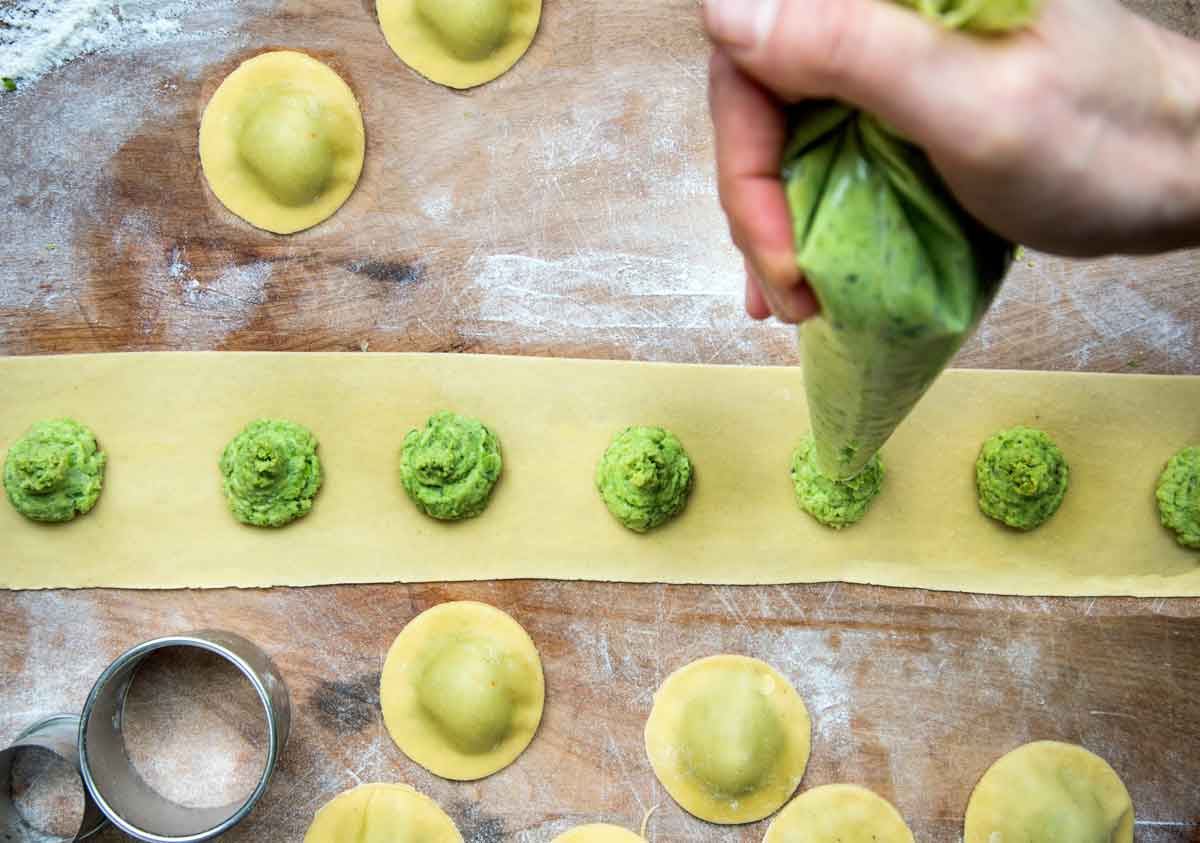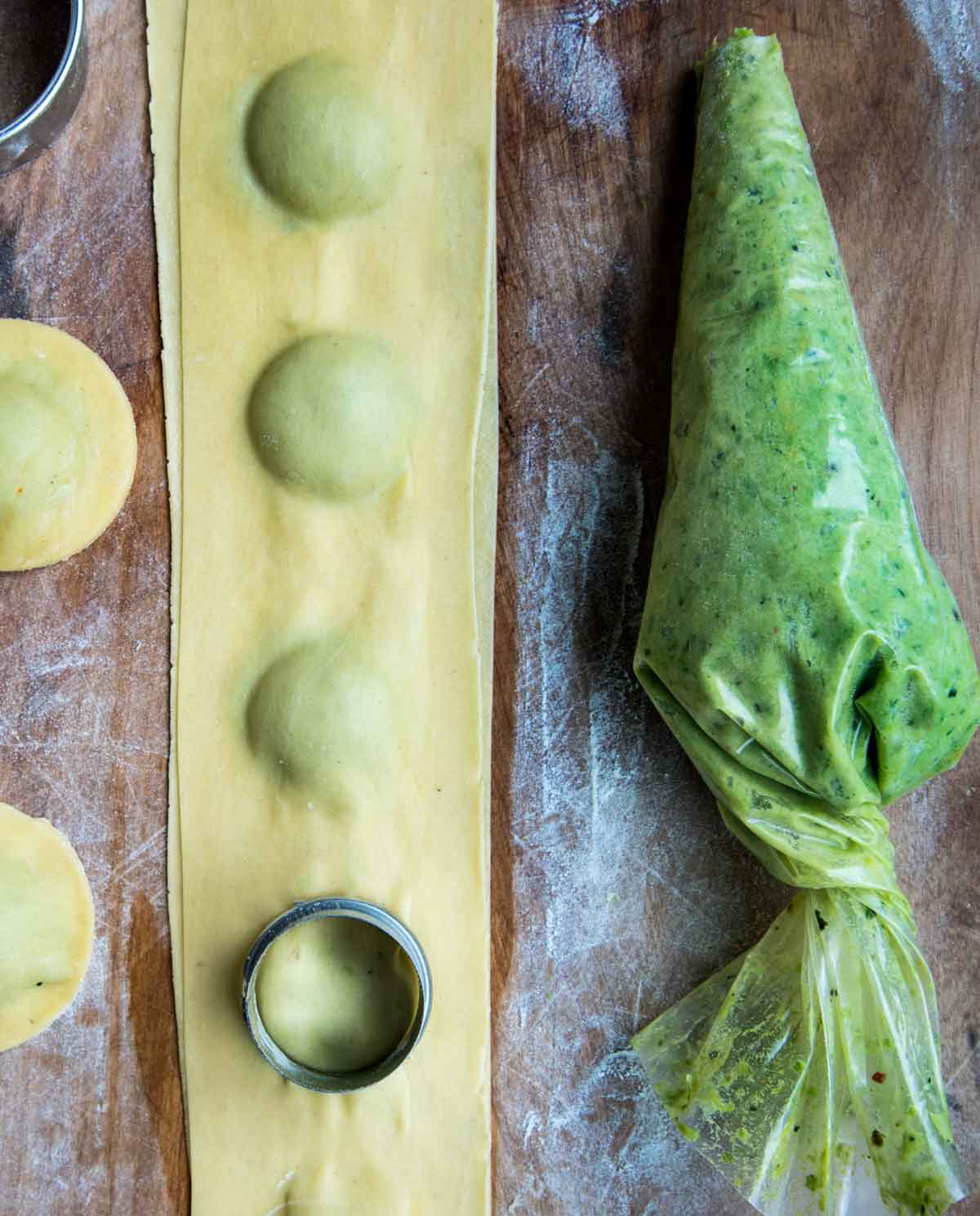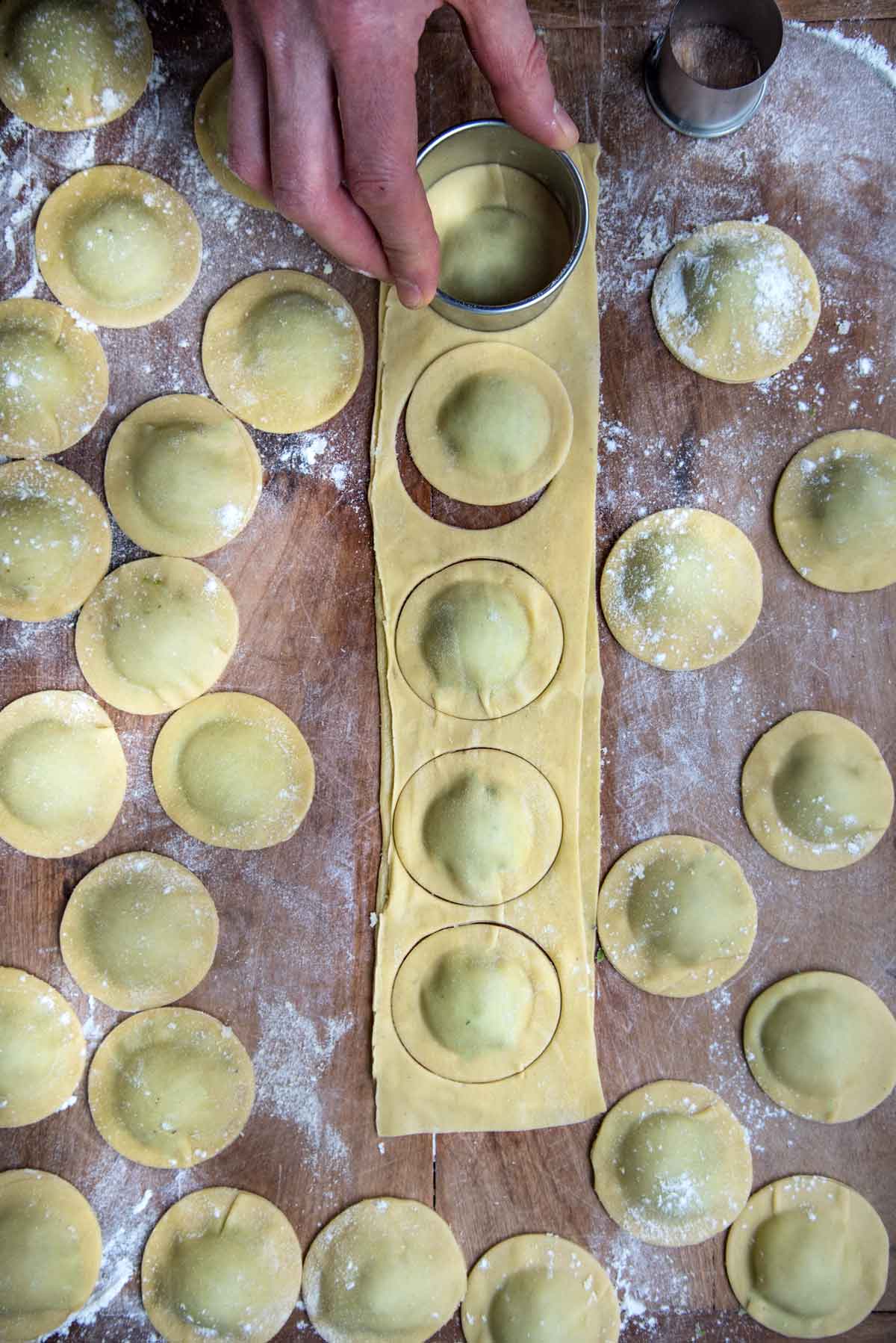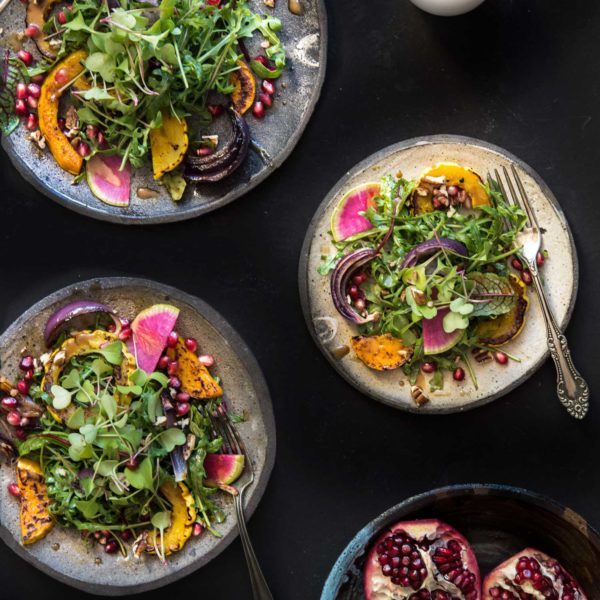

The pea plants are in the ground. They’re currently small and tame, but in just a few weeks will be overgrown and chock-full of peas. Freshly picked off the vine, peas are sweet, tender and delicious.
I like to briefly blanch peas and use them as the basis for a puree for a ravioli filling. The filling would also be nice slathered on a piece of crusty baguette. I added leeks (sautéed in a little butter), ricotta, Parmesan, mint and tarragon to the pea puree. The hint of anise-y tarragon, an overlooked herb, and mint pair exceptionally well with the sweet peas and gives the puree that extra little spring-y pop of flavor.
Consider making a big batch of ravioli and then freezing it. That way, when you’re in the mood for pasta, all you have to do is drop them into a pot of boiling water. A bit of work up front, but a tasty meal (yum!) in just a matter of minutes on the back end.
The cooked ravioli are tossed in a little melted butter and garnished with with pea greens, fresh mint, chives and chive blossoms from the garden.
Spring on a plate.


There’s no one ‘right’ way to make pasta dough, though I’ve been using Flour + Water’s recipe. It’s heavy on the egg/egg yolks, which make for a rich, pleasantly al dente pasta.




Pasta Dough
Makes a little over 1-pound of dough
2 well-packed cups 00 (or unbleached all-purpose flour) (360 grams)
1 teaspoon salt
2 large whole eggs (100 grams)
5 to 6 egg yolks (90 grams)
1 1/2 teaspoons extra virgin olive oil
Mix the flour and salt. Place the flour on a dry, clean work surface and form it into a mound. Use the flat bottom of a measuring cup to create a well in the middle.
Add the whole eggs, egg yolks and olive oil to the well.
With a fork, gently beat the eggs; be careful not to disturb the walls of the flour. Slowly begin to incorporate the flour walls into the egg mixture. Continue mixing the flour with the eggs until you have a shaggy, solid mass.
At this point, using your hands, start folding and forming the dough, incorporating the rest of the flour until you have a stiff, solid mass (removing any dry clumps of flour).
Knead the dough for about 7-10 minutes. Drive the heel of your hand into the dough, rotate the dough 45 degrees, and repeat until the dough is firm and bouncy and has a smooth, silken texture. Wrap the dough in plastic and let rest at least 30 minutes.
Rolling out the dough…Lightly flour your work surface. Cut your ball of dough into quarters. Remove one piece, keeping the rest covered in plastic so it doesn’t dry out.
Flatten the piece of dough with a rolling pin. Next, run the dough through your pasta machine starting with the largest setting (typically ‘0’ or ‘1’). Run it one to two times through each successive pasta roller setting until desired thickness.
What’s desired thickness? For stuffed pastas (ravioli, mezzalune, cappelletti), you’ll want to go a little thinner, setting ‘6 or 7’, since essentially you’ll be stacking the pasta sheets.
That being said, all pasta machines are a little different. Depending on your pasta machine, you may need a bit of trial and error to determine which thickness you like best. Roll out a few strands to different settings, drop them in a pot of salted boiling water, and see which thickness you like best.
Forming the ravioli…Pipe the filling about 1 1/2 inches apart down the length of the sheet of pasta. Lay the second sheet of pasta on top. Press out as much air as possible. With a 2 1/4-inch ring mold, cut into rounds. Repeat.
Pea Puree Filling
Makes a little over 5 dozen ravioli
2 cups frozen peas, thawed (or fresh, *blanched)
1 tablespoon butter
1 medium leek, white parts only, sliced
2 scallions, chopped
2 garlic cloves, sliced
1/2 cup ricotta
1/2 cup grated Parmesan
2 teaspoons fresh chopped mint
1 teaspoon fresh chopped tarragon
1 teaspoon lemon zest
Salt and pepper
To blanch the peas: Once all of the peas are shelled, drop them into a pot of rapidly boiling water. Let them cook for 1 to 1 1/2 minutes. Drain the peas in a colander. Chill the blanched peas in an ice water bath. Drain again.
Heat the butter in a skillet over medium heat. Add the leeks and sauté until the leeks are tender about 5 to 7 minutes. Add the scallions and garlic and sauté another minute or two. Remove from the heat and let cool.
Combine all ingredients in a food processor. Process to a smooth puree. Transfer to a piping bag.








One comment
Karin Fienieg
Made your pea puree ravioli